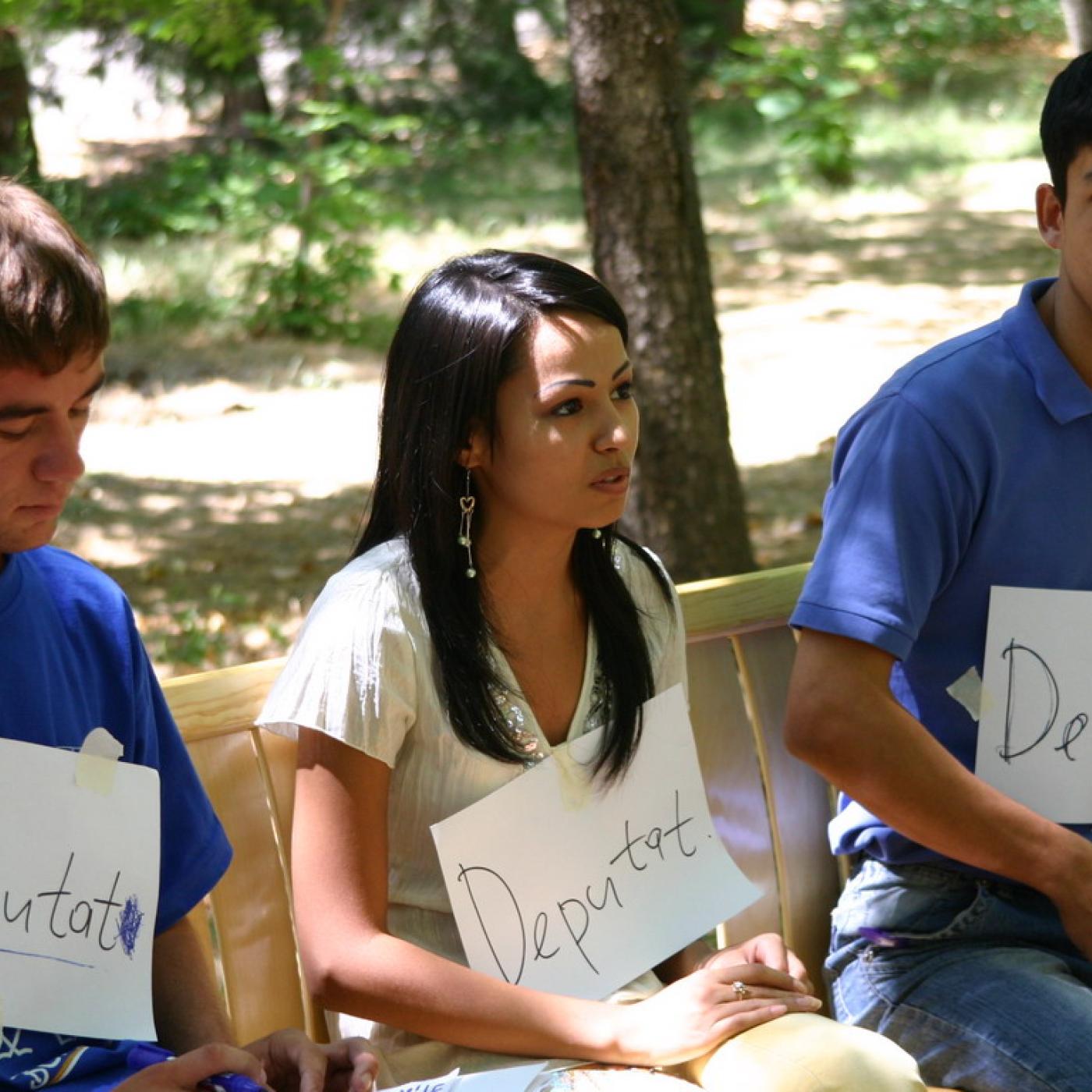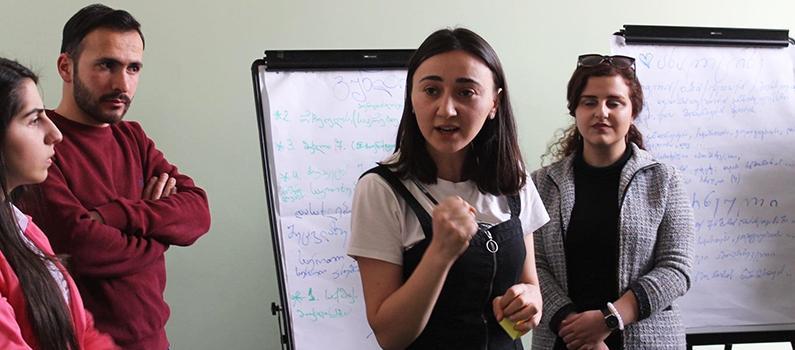CEPPS Youth Democracy and Governance Cross-Sectoral Initiative

About
The Youth Democracy and Governance Cross-Sectoral Initiative (CSI) is a discussion and knowledge-sharing forum dedicated to helping practitioners, donors, and young leaders across sectors explore opportunities and share promising practices that advance the political participation, representation, power, and leadership of young people in decision-making positions and processes. This Initiative is intended to complement existing communities of practice and knowledge sharing platforms to fill a gap in learning, to better cross-pollinate and coordinate efforts across the youth development and democracy and governance communities, and to identify, strengthen, and promulgate approaches that foster meaningful youth political participation across sectors.
Purpose of This Initiative
Young people’s participation in public life continues to be driven by specific issues or interests, which requires working across sectors to better engage them on issues they care about, while also connecting them to spaces for decision-making and political participation. Research also suggests that young people prefer more informal, grassroots forms of participation. However, if young people only engage with democracy through informal avenues, they will continue to be left out of crucial decision-making processes, resulting in policies and practices that don’t meaningfully represent them. It is therefore important to coordinate resources, networks, and expertise, across sectors to address the complex development challenges young people face and help amplify their leadership.
In response to the current trends in youth participation and development, the Initiative was created to:
- Identify and deliberate trends and challenges impacting youth political participation;
- Expand existing knowledge on cross-sectoral programming;
- Identify good practices for employing intersectional approaches; and
- Contribute to new and existing efforts to develop Positive Youth Development-informed initiatives across sectors.
Benefits of Participating in This Initiative
- Connect with young leaders and practitioners to contribute to dialogue sessions on addressing trends and challenges impacting youth political participation and leadership;
- Identify lessons learned, effective approaches and updates related to youth political participation and leadership within a Positive Youth Development framework;
- Enhanced ability to design, implement, monitor, and evaluate integrated youth political participation interventions within multi-sector youth programs; and
- Network and build collaborative partnerships with other youth development thought leaders, practitioners, and donors across sectors.
Monthly Briefs
CEPPS Youth Brief 1: Launch Event
Under the USAID Global Elections and Political Transitions (GEPT) award, the Consortium for Elections and Political Process Strengthening (CEPPS) kicked off the Youth Democracy and Governance CSI with a launch event bringing together practitioners, donors, and young leaders from across the world. This initiative is a forum and learning community for youth development practitioners to explore challenges and opportunities that foster meaningful political participation and leadership by young people.
CEPPS Youth Brief 2: Youth, Peace and Security
Young people constitute the majority of the population in conflict-affected countries and are often excluded from peacebuilding efforts and underrepresented in formal political structures. In December 2015, the United Nations Secretary Council officially recognized the positive role of youth in peace and security (YPS) in Security Resolution 2250, which urge states to both consider young people’s political exclusion and increase the representation of youth in all levels of decision-making. This requires analyzing YPS efforts through a democracy, human rights and democracy lens with the understanding that establishing and maintaining peace is inherently political.
CEPPS Youth Brief 3: Health and Humanitarian Responses
Young people are a growing demographic who are uniquely impacted by health inequities and related threats created by disaster, climate change and disease outbreaks. The impact of health and humanitarian crises, particularly on young women and people with disabilities, is often overlooked, as is their power to make change and actively contribute to public health initiatives. Likewise, young people are often the target of public health policies and programs. However they often have limited opportunities to shape these efforts or lack the political knowledge and organizing skills to ensure successful delivery. Globally, only 6 percent of young people under age 35 are elected representatives, which greatly reduces their ability to tackle health disparities directly through legislative action. Investing in the health and well-being of young people creates benefits across development sectors and enhances support for future generations.
CEPPS Youth Brief 4: Families and Communities
Social and Behavior Change (SBC) interventions directly confront attitudes and beliefs and help shape social norms that can enhance young people’s participation in public life. For example, programs targeting the behavior of community members who influence youth actions can shift social norms to ensure more inclusive and equitable youth participation and leadership opportunities. A number of actors exert influence over a young person’s life choices, whether negatively or positively, intentionally or unintentionally. Community members, such as parents, peers, coaches, civic leaders, and teachers, can create safe spaces that foster young people’s positive, meaningful participation in public life. These actors can also support opportunities for young people to practice civic and political engagement and play leadership roles in achieving community change across development sectors.
Final CEPPS Youth Report
Over the course of the initiative, CEPPS identified four key cross-sectoral challenges, including:
- Limited examples of youth-specific cross-sectoral approaches;
- Exclusionary structures that limit young people’s access to decision-making;
- Prohibitory attitudes, beliefs and social norms transcend sectors and have a direct impact on young people’s agency and opportunities to participate; and
- Insufficient understanding of how complex socio-economic problems are shaped by formal and informal power dynamics.
Recognizing these cross-sectoral challenges, CEPPS identified the following seven key recommendations to support the implementation of cross-sectoral youth programs:
- Leverage existing resources to invest in cross-sectoral programs;
- Leverage existing relationships to build cross-sectoral partnerships;
- Co-design cross-sectoral initiatives in partnership with young people using an intersectional PYD framework;
- Train youth leaders across development sectors and integrate “soft skills”;
- Enact quotas to lower the age of eligibility for participation;
- Expand non-DRG practitioners’ understanding of informal political participation; and
- Allocate resources to monitor and evaluate cross-sectoral youth programs.
CEPPS will build upon these lessons and recommendations in Phase II of the initiative to develop resources and continue discussions that support youth-focused cross-sectoral programs.





